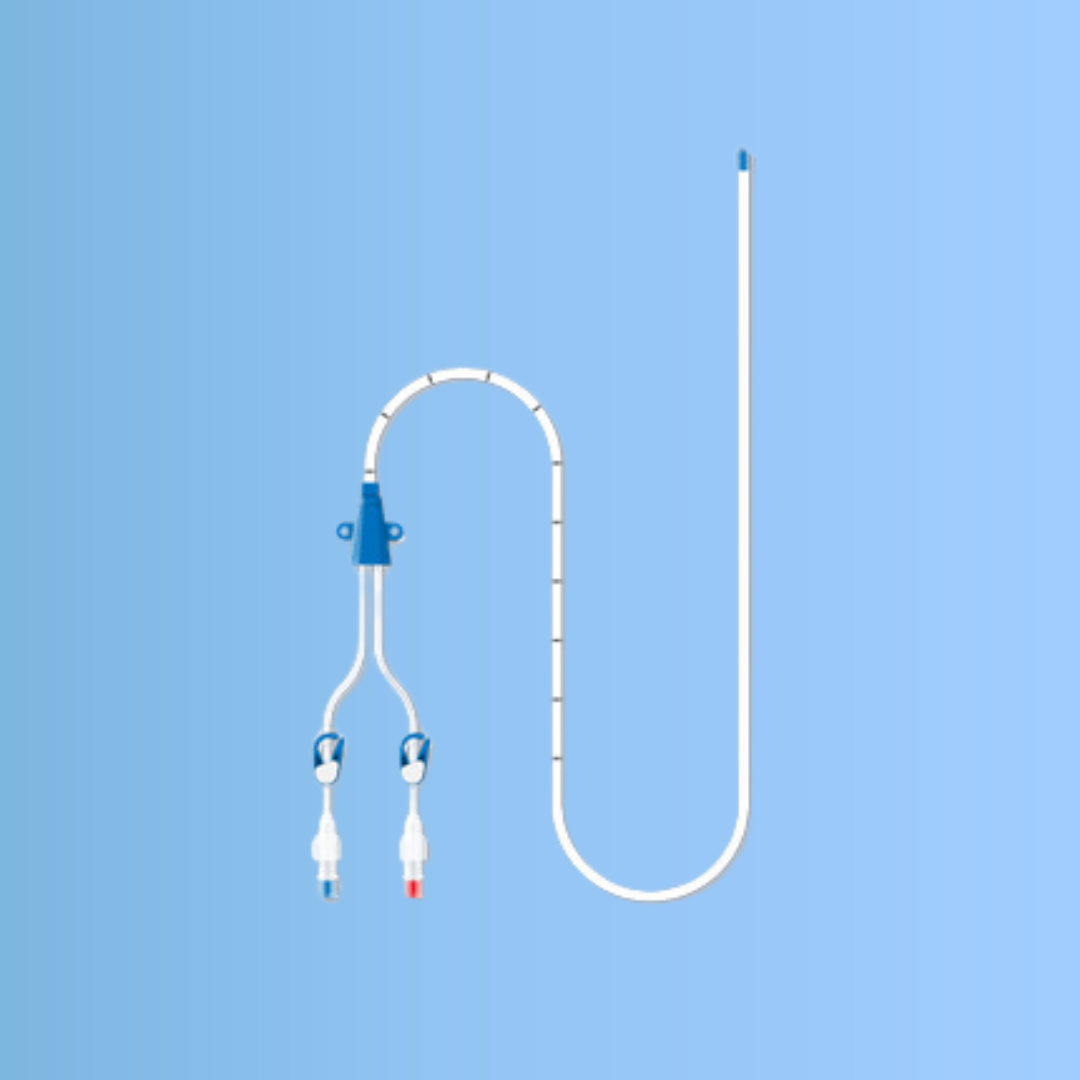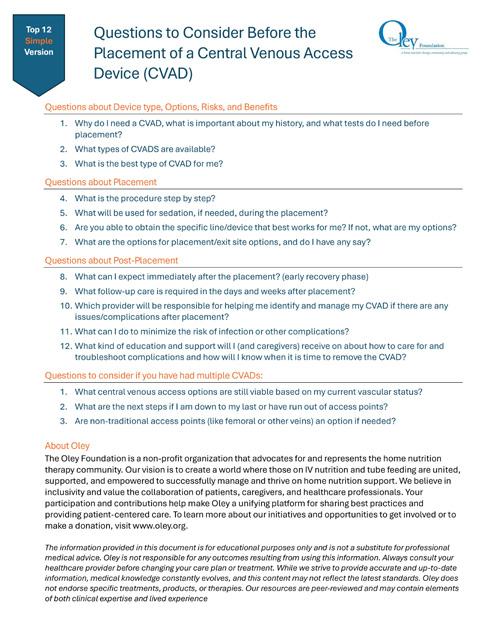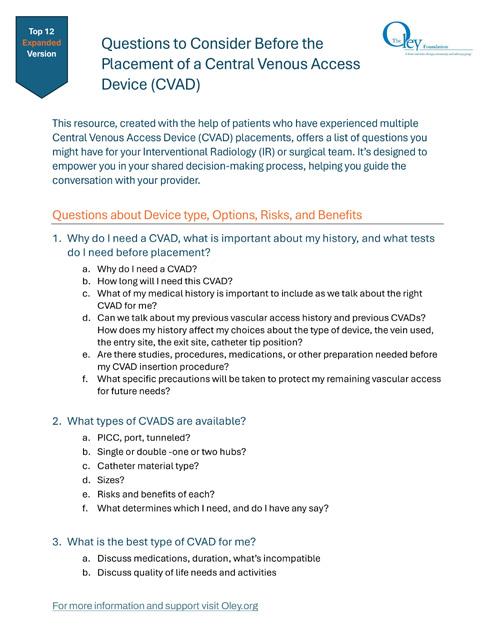
4 minute read
Empowered Conversations: Central Line Placement Questions
Beth Gore, PhD | Oley CEO
This resource, created with the help of patients who have experienced multiple Central Venous Access Device (CVAD) placements, offers a list of questions you might have for your Interventional Radiology (IR) or surgical team. It’s designed to empower you in your shared decision-making process, helping you guide the conversation with your provider. From understanding the types of devices available to knowing what to expect after placement, this resource ensures you are informed, involved, and confident in your care.
Have you ever had conversations about life-changing decisions, like central line placement, that can feel rushed or one-sided, leaving you as a patient feeling unheard? How can we best combine the clinical expertise of healthcare providers, with the lived experience of patients, including questions, values, and preferences?
Shared decision-making isn’t just a concept—it’s the foundation of care that respects both the clinical expertise of healthcare providers and the lived experiences of patients. It’s not always about getting everything we want but about being heard and having a clear understanding of the decisions being made. The intersection of clinical expertise and lived experience often creates the best path forward.
These conversations should not be one-way streets. Patients need to understand their options, feel confident in their choices, and leave the conversation knowing that their voice was part of the process.
This is not always the case. Some members share stories about how they were presented with a consent form moments before a procedure they didn’t fully understand, with no opportunity to ask questions. Others talk about how their preferences or concerns were overlooked, and they walked away with a central line that didn’t fit their needs or lifestyle. It’s not that the healthcare
providers didn’t know their specialty—they were, in fact, often experts. But sometimes it felt like the task was done TO us, not WITH us.
The goal isn’t to “get our way.” It’s to walk away from these conversations feeling confident that the choices made are the best for our health and situation, based on both clinical knowledge and our personal experiences, values, and preferences. The goal should be collaboration.
In the long-term nutrition support world, the need to collaborate for current and future vascular access needs is unique. Decisions made are sometimes long-lasting and far-reaching, which is why proactive conversations are even more important.
If the average central line is placed for a week and remains in the hospital, with the patient or family never needing to handle its care, the level of shared decision-making may be less extensive. Patients should understand the risks, benefits,
The intersection of clinical expertise and lived experience often creates the best path forward.
and alternatives. They should be empowered and informed about their role in keeping the line safe and be aware of when to alert healthcare professionals if they notice something isn’t right.
However, what should the conversation entail for patients who will be going home with a central line—where they or their caregivers are responsible for the line’s daily use and care, and it’s expected to stay in place for months, years, or even a lifetime? Shared decisionmaking should reflect the long-term impact this device will have on their life. Patients should be involved in discussions about the type, location, and care of the device. Yet, healthcare providers may not always realize the need to shift toward this more inclusive approach. It could be up to us as patients and caregivers to gently guide the conversation toward true partnership, ensuring that our voices are part of the decision-making process.
Oley recognized the need for a tool to build this gap—a resource shaped by the voices of our community. We gathered input from patients and caregivers who are relatively new to central lines and those who have had them for decades. We asked: What questions did you ask, or wish you had asked, before getting your central line placed? What questions do you think patients should be asking? We also included healthcare providers who place long-term central lines to learn what questions they would like to add to this conversation.
Their insights shaped this tool, offering a starting point for the conversations to consider having with your healthcare team. This is not an exhaustive list, and not every question will apply to everyone, but the real-life experiences are what make this tool practical and powerful.


The thumbnail images above direct to two versions of this resource, one simplified and one expanded. We hope you will consider starting with one of these the next time you’re preparing for a central line, so that you may feel empowered during the decision-making process. ■










